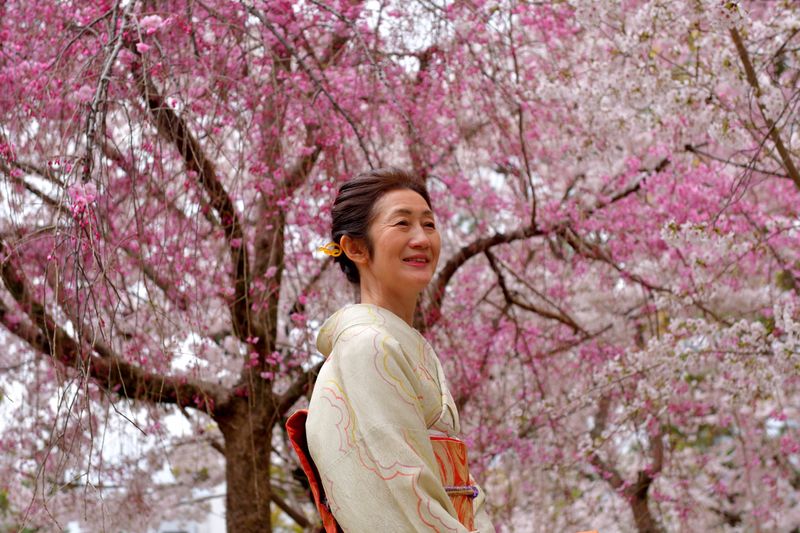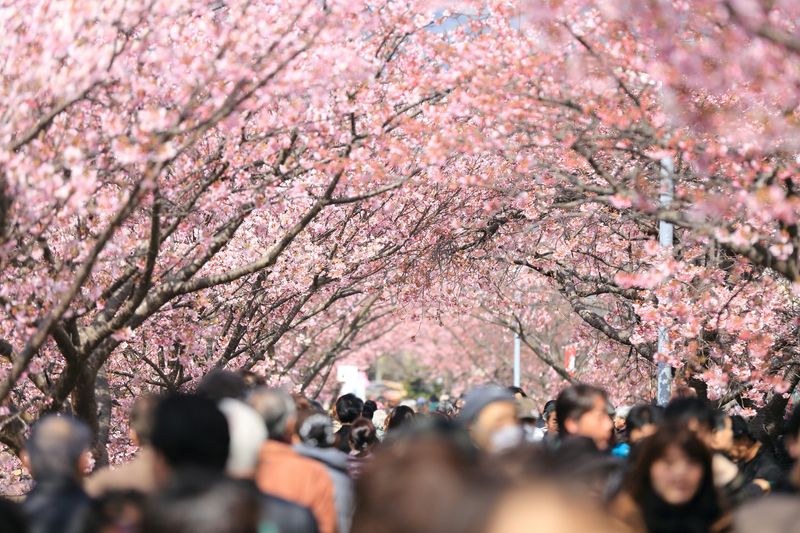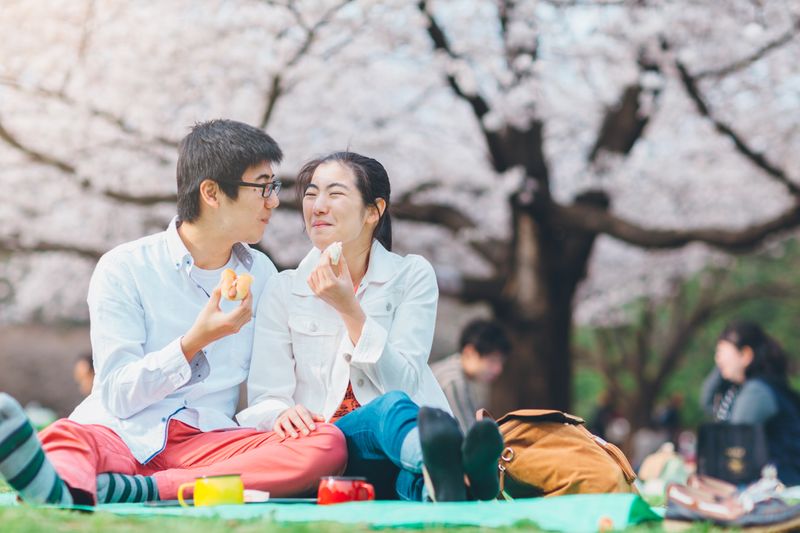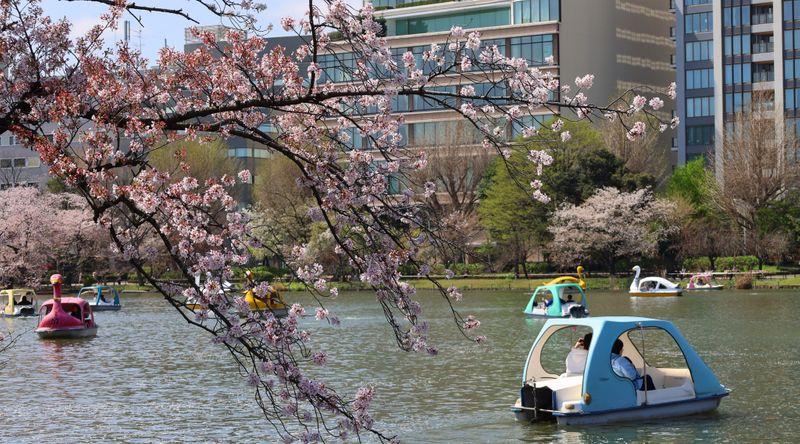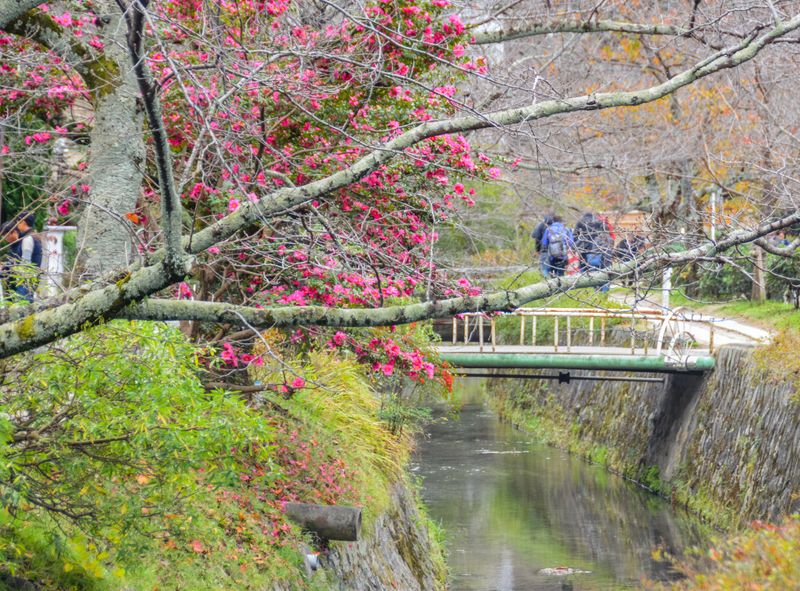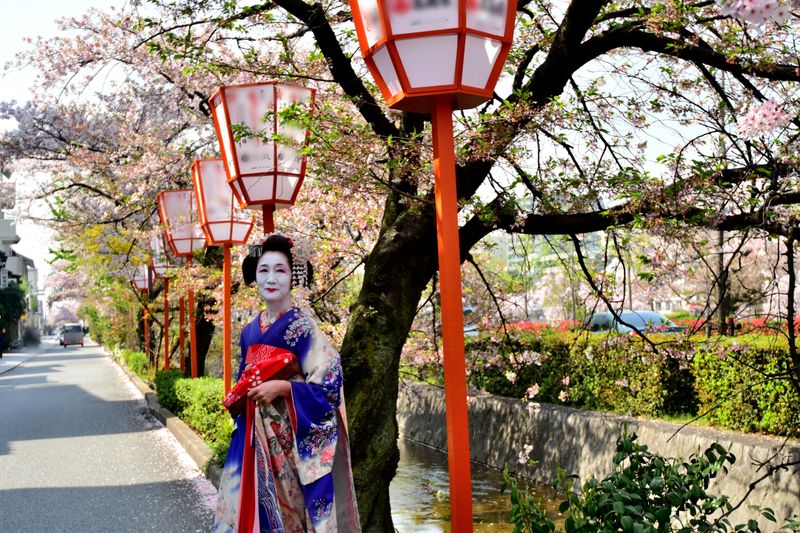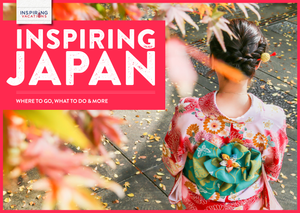Hanami is one of Japan’s most beautiful spring traditions. Translating to "flower viewing," Hanami refers to the custom of gathering beneath blooming cherry blossom trees (sakura) to appreciate their fleeting beauty. Each year, as the delicate pink petals begin to bloom, the atmosphere across the country shifts. Parks fill with families, friends, and travellers who come to celebrate the changing seasons, enjoy picnics, and take in the stunning natural displays.
If you're planning a trip during Hanami season, this Inspiring Vacations guide covers everything you need to know, from the history of Hanami to etiquette tips, picnic planning advice, and the best Hanami spots across the country.
What is Hanami?
At its core, Hanami is the act of appreciating flowers in bloom, most commonly cherry blossoms. The word combines hana (flower) and mi (viewing), and although it sounds general, it has become entirely synonymous with cherry blossoms in Japan. The tradition is deeply cultural, offering a moment to reflect on beauty, impermanence, and the passage of time.
While many Japanese people enjoy Hanami casually with food and drinks, others treat it as a more contemplative event. Some attend Hanami festivals at historic shrines or temples, while others simply enjoy a quiet walk beneath the trees.
Did you know?
The cherry blossom (sakura) is Japan’s unofficial national flower and symbolises renewal and the fleeting nature of life.
The history of Hanami in Japan
The earliest form of Hanami dates back to Japan’s farming communities. In ancient times, farmers used the blooming of sakura as a signal to plant rice and offered seasonal food beneath the trees as a gesture to the gods. These humble beginnings evolved into grand events during the Heian period (794–1185), where nobles celebrated blossoms with poetry, music, and sake in private gardens.
During the Edo period (1603–1868), the tradition became more widespread. Tokugawa Yoshimune, a shogun at the time, encouraged public planting of cherry trees in parks and along riverbanks so that everyone could enjoy them. Since then, Hanami has grown into a national event celebrated across social classes, ages, and regions.
Today, Hanami continues to be an important part of Japanese culture, and many of our Japan tours are planned to coincide with sakura season.
When is Hanami season in Japan?
Hanami season typically begins in late March and peaks in early April. However, the exact Hanami dates vary from year to year and depend on the region and climate. The 2025 Hanami forecast is expected to follow the typical schedule, with early blooms in southern regions and later blooms up north.
Here’s a rough guide to cherry blossom viewing season:
- Tokyo & Kyoto: Late March to early April
- Osaka & Hiroshima: Late March to early April
- Sapporo (Hokkaido): Late April to early May
- Fukuoka (Kyushu): Mid to late March
Keep in mind that full bloom (mankai) usually lasts about a week, so timing is key. Many websites and travel services offer up-to-date Hanami forecasts to help you plan your trip.
Hanami etiquette and local customs
Joining a Hanami picnic is a fantastic way to take part in this cultural tradition. But it’s important to understand a few basic Hanami etiquette rules:
- Arrive early: Popular parks fill up quickly. If you want a good spot, especially in cities like Tokyo or Kyoto, claim it early in the morning.
- Bring a groundsheet: It's common to sit on a plastic sheet or mat. Bright blue tarps are typical.
- Take your rubbish with you: Bins are scarce in Japanese parks. Bring a bag to carry your waste home.
- Check local rules: Some locations don’t allow alcohol or picnics, and others may have restrictions during festivals.
- Be respectful: Don’t shake or climb the trees or pick blossoms, and keep noise to a minimum.
Did you know?
In larger parks, companies often send junior staff to claim picnic spots hours before the event begins.
How to prepare for a Hanami picnic
Planning a Hanami picnic is part of the fun. Many shops and department stores sell seasonal bento boxes during sakura season, filled with beautifully presented dishes like:
- Sakura mochi (pink rice cakes wrapped in cherry leaves)
- Takenoko (bamboo shoots)
- Grilled salmon or tamagoyaki (Japanese omelette)
- Pickled vegetables cut into floral shapes
Pair your bento with green tea or sake, and bring along blankets, reusable cutlery, and wet wipes. Locals often bring small folding tables or cushions to make things more comfortable. For a touch of Japanese tradition, include seasonal ingredients and floral motifs.
The best Hanami spots in Japan
There are countless Hanami spots across the country to view the cherry blossoms, from city parks to temple grounds. Here are some of the most popular and picturesque locations:
Maruyama Park, Kyoto
Located in the heart of Kyoto's Gion district, this park is home to nearly 700 cherry trees, including an iconic weeping sakura. At night, lanterns light up the trees and create a magical atmosphere. Expect big crowds and early arrivals.
Philosopher's Path, Kyoto
Ideal for a quieter stroll, this two-kilometre walking trail follows the Lake Biwa Canal and is lined with hundreds of cherry trees. The path connects Ginkaku-ji Temple (Silver Pavilion) with Nanzen-ji and is particularly scenic in the early morning.
Meguro River, Tokyo
More than 800 cherry trees line the banks of the Meguro River in Tokyo, forming a pink canopy overhead. During Hanami season, lanterns illuminate the river at night, and food stalls offer everything from yakitori to sakura-themed desserts. Visit late in the season to see petals drifting on the water.
Ueno Park, Tokyo
One of Tokyo's oldest and most popular Hanami spots, Ueno Park is home to over 1,000 cherry trees. During the Hanami festival, the park buzzes with music, food stalls, and picnickers. The nearby museums and zoo make it an easy full-day outing.
Yoshino, Nara
For a truly breathtaking view, head to the mountains of Yoshino, where more than 30,000 cherry trees bloom across the hillsides. Divided into four viewing sections, Yoshino offers one of the most dramatic sakura displays in Japan.
Shinjuku Gyoen, Tokyo
A mix of traditional Japanese, English, and French garden styles makes Shinjuku Gyoen one of the most elegant places for Hanami in Tokyo. With over 1,000 cherry trees of various types, the blooming period is longer, giving visitors more flexibility. Alcohol is not permitted, making it a quieter and more family-friendly location.
Himeji Castle, Hyogo
One of Japan’s most famous castles, Himeji Castle, is also one of the most scenic places to enjoy cherry blossom viewing. The contrast between the white castle and the soft pink blossoms is stunning. The surrounding park has over 1,000 sakura trees and offers picnic areas and night illuminations.
Hanami festivals and events
Many cities and towns across Japan host Hanami festivals during sakura season. These range from quiet temple events to full-scale street parties with music and food stalls. Our Hanami festival guide includes:
- Hirosaki Cherry Blossom Festival in Aomori, known for its moat filled with fallen petals
- Sumida Park Sakura Festival in Tokyo, with boat rides and riverside celebrations
- Takato Castle Ruins Park Festival in Nagano, where cherry trees cover the historic castle grounds
- Matsuyama Shiroyama Park Cherry Blossom Festival, featuring traditional music and lantern-lit trees
- Miharu Takizakura Festival in Fukushima, where a 1,000-year-old cherry tree blooms in spectacular form
- Goryokaku Park Festival in Hakodate, with a star-shaped fort surrounded by cherry trees
These events often include performances, traditional food, and evening illuminations known as yozakura (night sakura).
Hanami tips for travellers
Planning your Hanami Japan experience? Here are some helpful tips:
- Book accommodation early—cherry blossom season is peak travel time
- Pack layers as Spring weather can change quickly
- Download a Hanami forecast app for real-time bloom updates
- Respect local spaces, stay on paths and avoid blocking foot traffic
- Explore lesser-known spots for a quieter experience
- Bring a tarp, seasonal bento, drinks, and take your rubbish home
- Observe key etiquette rules: No loud noise, no picking flowers, and follow local rules.
The best way to experience hanami in Japan is with a well-timed itinerary. Our 14 Day Cherry Blossoms of Japan tour is carefully scheduled around the sakura forecast, or you can explore other itineraries like the Premium Japan By Rail and travel during recommended times to enjoy cherry blossom viewing at its peak in some of the country’s most scenic locations.
Explore ancient temples, visit vibrant cities like Tokyo and Kyoto, and enjoy the seasonal spectacle of sakura in full bloom. Find out more about the best time to visit Japan and view all our Japan tours today.
